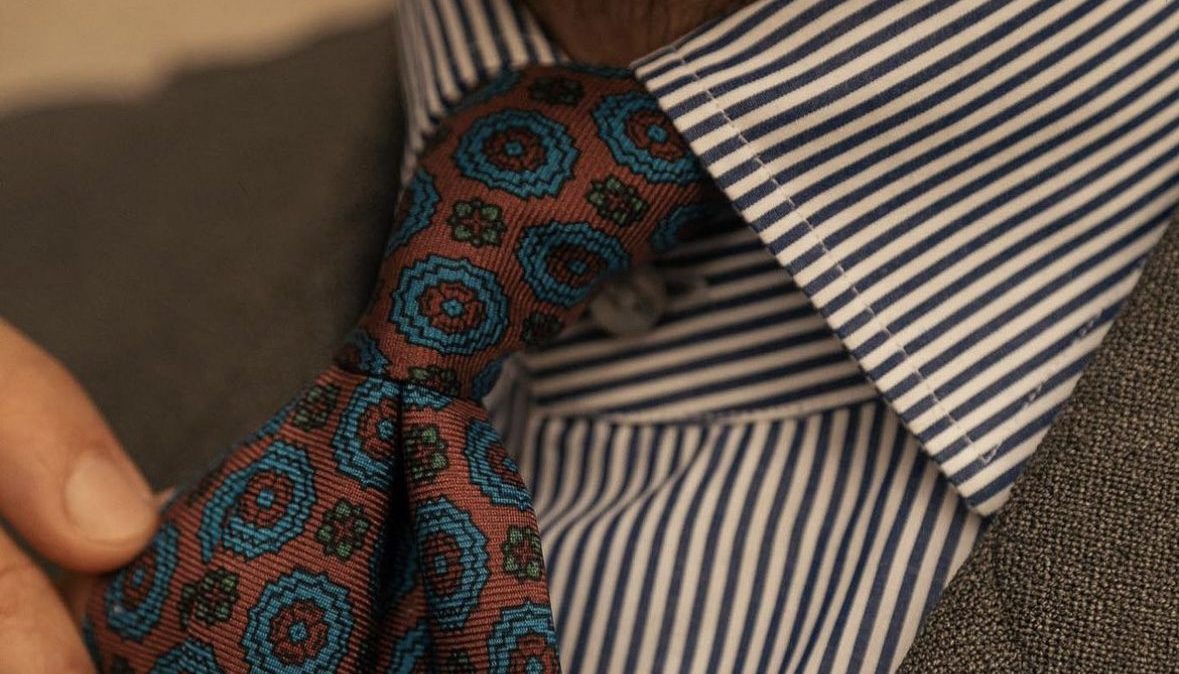
Madder has been around for millennia, in one way or another. The name refers to the perennial Rubia genus and is found in many parts of the world – and the key derivative Alizarin has been known as Turkey Red (sometimes Turkish-), and of course, Madder Red.


It is supposed to have been the earliest form of lipstick, discovered by chance when early Africans were enjoying the root. Also it graced the flags of the Persian Empire and of France, amongst a myriad of other uses. A curiosity of Madder is its association with Paisley – as it is known in the English speaking world. In Italy and other countries, the Paisley pattern is known as cashmere – and this is probably more factually correct. Paisley, a town in Scotland with a rich heritage of silk printing, particularly as the British Empire grew, had developed imitations of the beautifully designed Kashmiri shawls that had come back to Britain via the Empire and associated companies.
Thus, through the expansion of Empire and English language trade (in North America, especially), the name of the town where it was later printed overtook the origin of the design in Kashmir (thence cashmere). The roots of the pattern go back far deeper to Indian and Persian culture; with the origin of the pattern mooted to come from pressing the side of a closed fist into the dye and then imprinting it on silk, chiefly, as well as other cloths. Certain regions and cities tended to find their own specialties, with Macclesfield becoming (and remaining until this day) extremely gifted in the production of neat prints (Macclesfield Neats) and Kent becoming particular champions of Pines, the small, neat and often evenly spaced curvy pattern that somewhat mimics what many would see as the heart of a Paisley design.
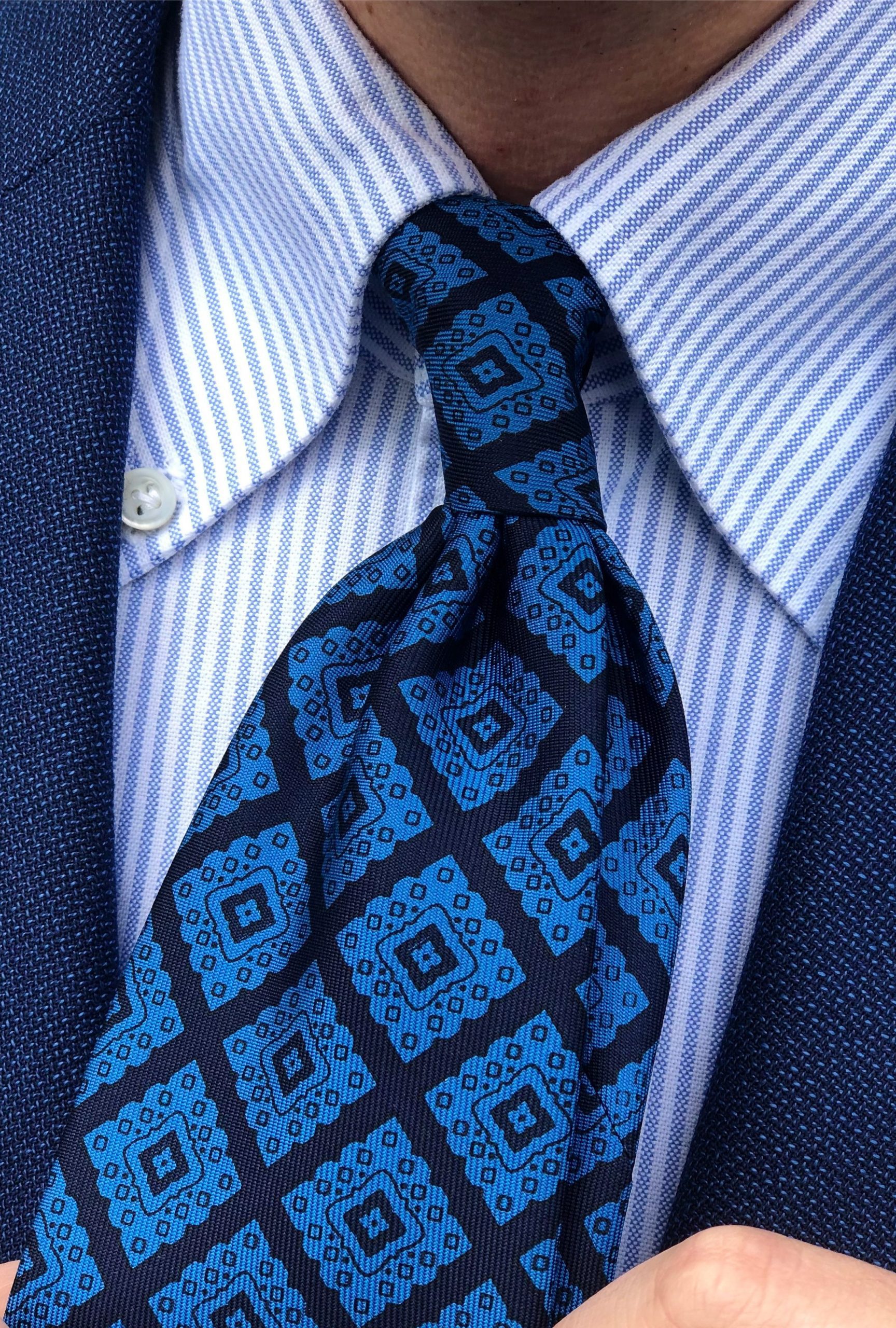
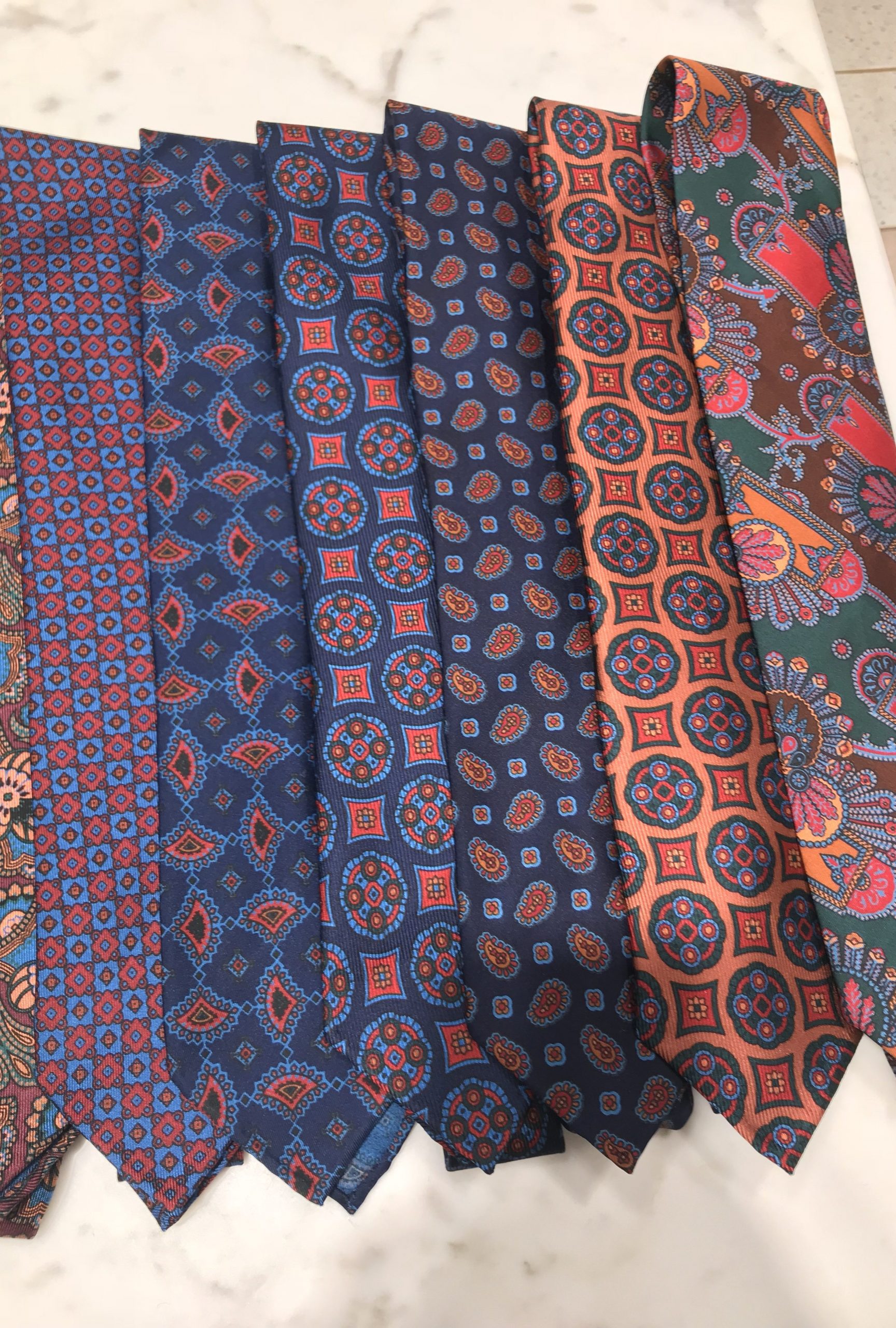
For Madder, heavier weight, ordinarily 36oz or heavier, is required to ensure that the silk endures the full process of production. One of the most fascinating aspects of screen printing is that the colours settle quite some time after printing is completed – so there is usually a variance from the expected finish. This for some true aficionados can result in multiple variations of the same colour-way, with some nutty shades leaning heavily towards shades of orange, and the classic red veering sometimes towards a deep rose or alternate shades of intense red – and browns that lead to maroon, wines that range from Bordeaux to Burgundy, lighter clarets to deeper maroons.
It is, in any case, fascinating. Much modern Madder is now digitally printed, combining the chemicals, acids and dyes necessary to create the Madder colours and classic, chalk-hand feel, with a more predictable and consistent finish. The turnaround of this is obviously faster and more affordable – with some irony, some of the pressures that befell hand-printing are now bearing down upon screen printing. Digital also
leads to far less waste and can also be produced and reproduced in lesser quantities, allowing for some very exclusive runs to be completed. The precision afforded and advances in technology means that the quality is still of an exceptional and market-leading quality for printed silk.

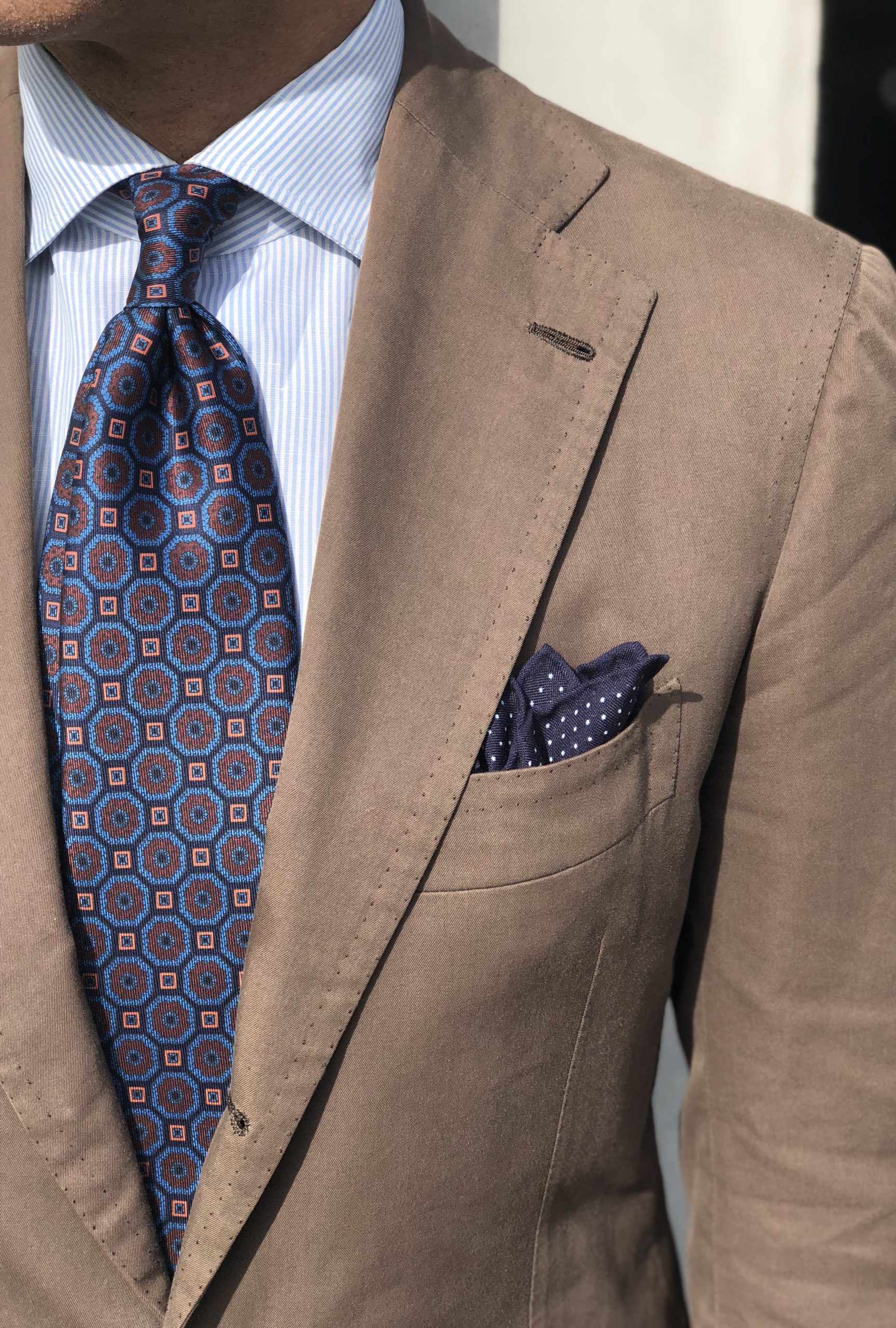
All three of the above methods of printing have their advantages and, in each case, Madder produces colour combinations that are simply not replicable. The clever addition of indigo and careful control of acids gives Madder a distinct blue sheen, which is a great advantage when pairing with different styles. It should be noted that the Kentish cow sheds are no longer put to use to derive specialist cow excretion to treat the silk with! However, the silk is still washed or immersed in a dye bath, which locks in the colours and helps to form that final, chalky texture and exquisite colouring. As such, Madder can contain some pretty extravagant mixtures of colour and oversize patterns – yet not seem overdone.
Madder can intertwine seemingly incompatible shades of red, gold, green and multiple shades of blue, sometimes with brown (a traditional colour) and deep wine shades through intensive design work. Purples are also sometimes produced by careful manipulation of the red, especially and a veritable cornucopia of colours can be brought together and achieved, sometimes through sheer luck rather than judgement. In fact, the silk could be well compared to tweed for the great number of colours all working together. Through bringing an entire outfit together, a Madder tie or pocket square can aid the wearers application of the Italian concept of sprezzatura (whereby an excellent effect is carried-off, despite no trace of any deliberate effort) with a classically elegant finish which is as much classically British as it is purely classy and sartorial.
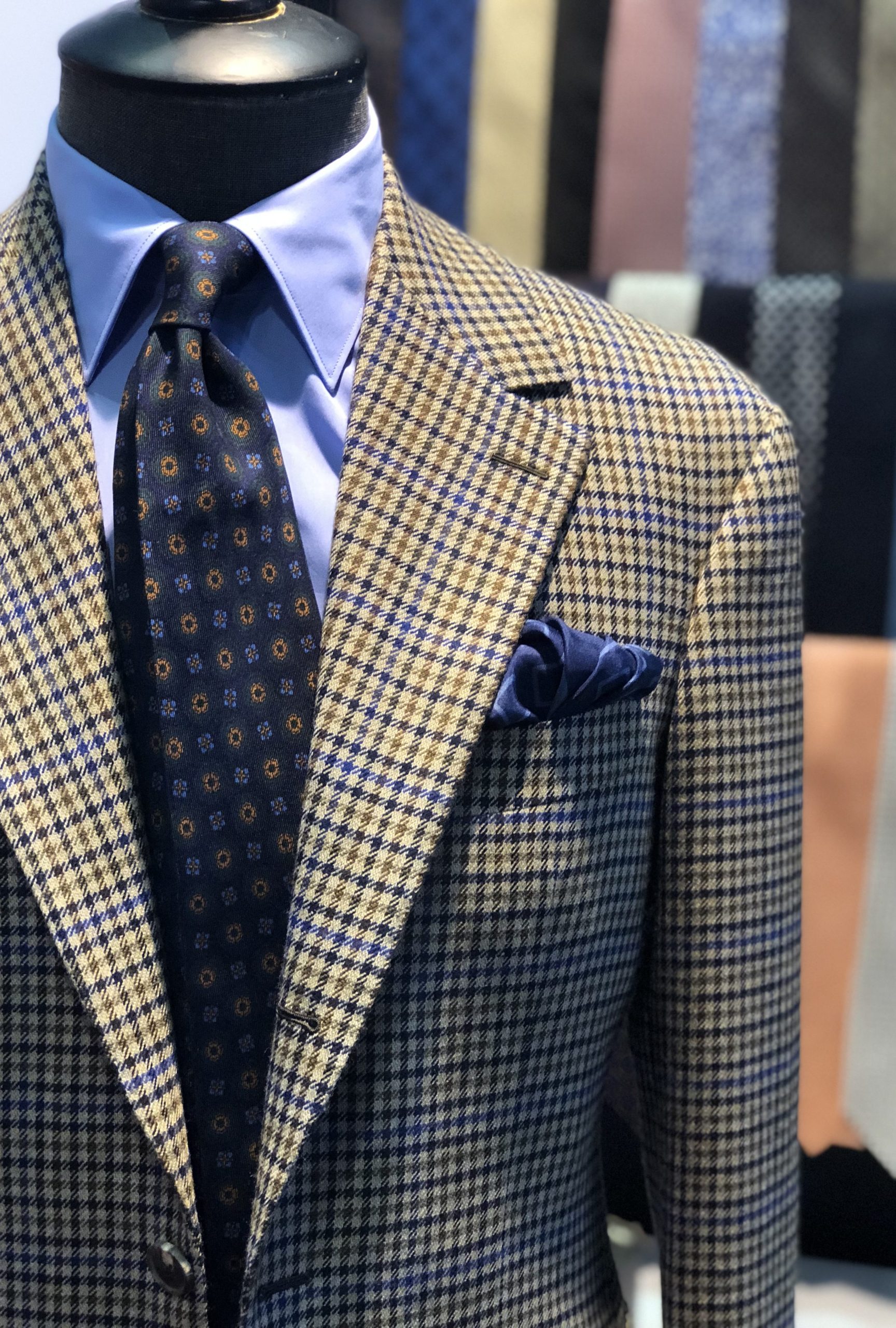
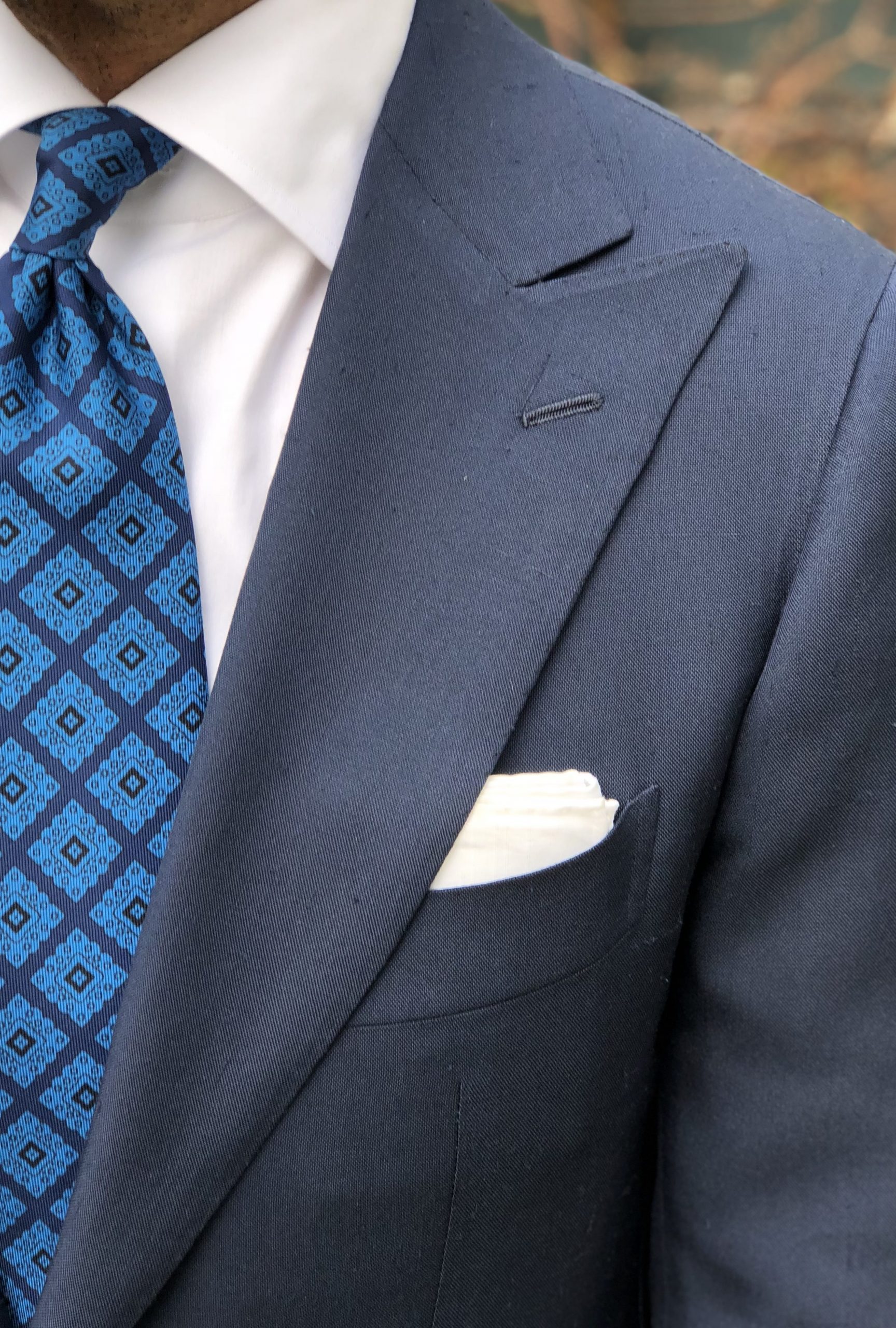
With artwork which was hand-drawn over a century ago by the most passionate and skilled artists, the effort has already been put in, well before the wearer finally owns their own masterpiece(s). The beauty of Madder is that it will sit comfortably with and any shade of blue or grey (as the historic choice of a gentleman for suiting), while it will also lift an array of other shades. It will, for instance, match beautifully with a smart-casual look, sports coat or country suit. Rusts, golds and buff colours work very well with the lighter shades of spring – and summery blazers.
Deeper shades lift the wintry looks of a loden overcoat or tweed jackets. Not forgetting the classy appeal of most hues and many designs with a business suit: it is easy to see that the silk is incredibly versatile. In addition to being used as an accessory, Madder silk is also perfectly suited to be worn on its own. Rather than simply lifting an outfit, a Madder dressing gown is an incredible way to start/finish the day; perhaps to spend the whole day in! In conclusion, it is fair to say that, leading from a strong, cultured and colourful past, it remains perfectly agile – and the future is Madder still.
Text by Christopher Mundy
Signup to be the first to hear about exclusive deals, special offers and upcoming collections